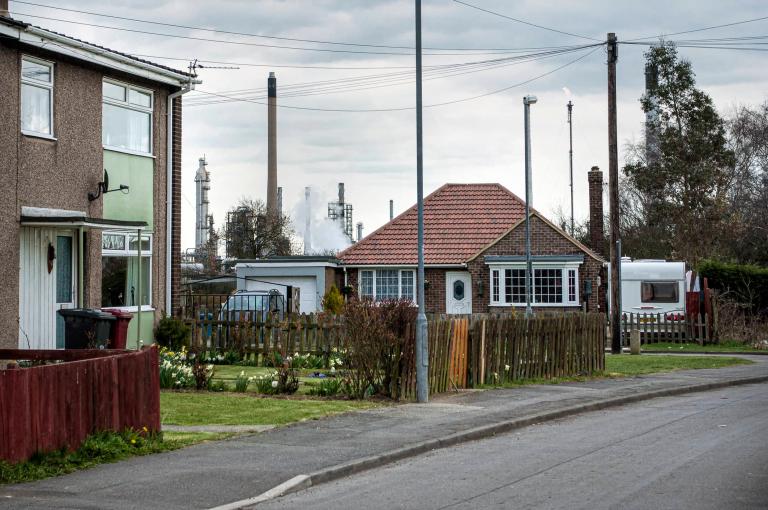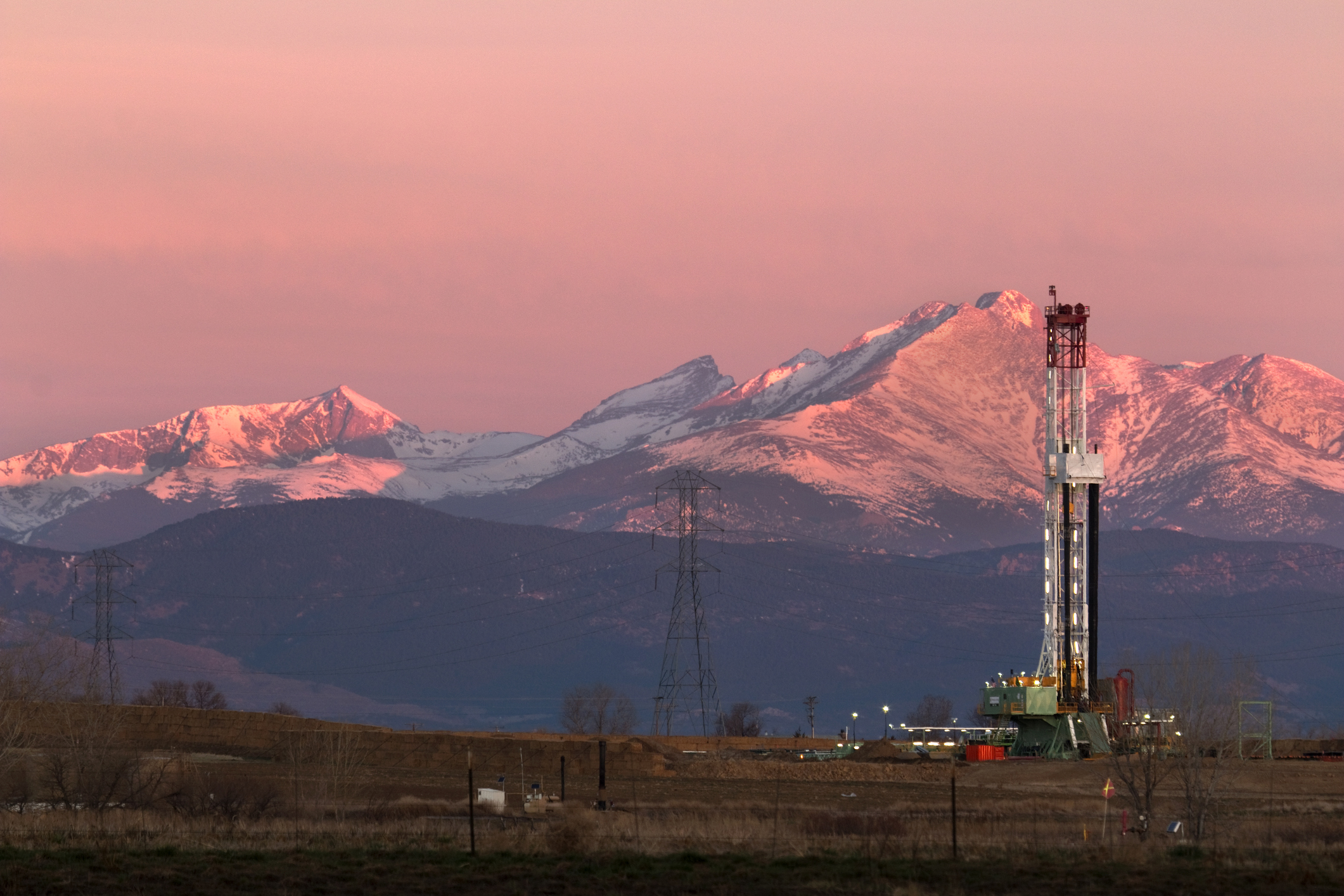When oil and gas companies are done extracting from a well, they’re supposed to plug it and clean it up: This prevents both physical hazards to wildlife and the environment and also a potentially alarming volume of planet-warming methane pollution. However, it’s not uncommon for an oil company to disappear before doing so, leaving the state on the hook for cleanup.
To account for this, states typically collect bonds from companies before they drill — financial assurance meant to cover the cost of cleanup if the companies shirk their responsibility. But states walk a tight rope when designing their bonding programs: While they want to have enough funds on hand to clean up the mess left behind by irresponsible companies, they also don’t want the bond amounts to disincentivize drilling.
Under current bonding schemes, states are woefully underfunded, leaving their coffers inadequate to the task of cleanup. Nationwide the number of unplugged abandoned wells has risen to a whopping 2.1 million. With funding from the new bipartisan infrastructure law bringing renewed attention to the scourge of abandoned wells, states have been reassessing their bonding rules. Colorado is the latest to take on the thorny issue.
After countless hours of testimony and a year of debate over at least five versions of draft rules, the state’s oil and gas regulator passed sweeping regulations on Tuesday to govern how much money companies have to provide as financial assurance before they can operate in the state. The new rule, which the state’s oil and gas commissioners described as “robust” and a “paradigm shift,” will require companies to post hundreds of thousands of dollars in additional funds and are expected to ensure that taxpayers are less at risk for being left on the hook if oil and gas operators file for bankruptcy.
The rule is “protective of the taxpayers of the state and really sets the standard for thoughtful and responsible oil and gas development,” said Commissioner John Messner at a public meeting before the Tuesday vote.
In Colorado, as in many other states, the financial assurance program has been severely underfunded. According to the Colorado Oil and Gas Corporation Commission, or COGCC, the state currently has about 800 operators who have posted $270 million in bonds for plugging wells and reclaiming well sites. That breaks down to approximately $5,400 for each of the state’s 50,00 wells. Not every operator is expected to abandon wells, but if a significant number do, taxpayers will ultimately foot the bill for cleanup: The state estimates that it costs an average of $93,000 to plug and clean up a single well. Already, Colorado currently has 625 orphaned wells in need of plugging and cleanup.
Current rules allow operators with up to 100 wells to secure a so-called blanket bond of $60,000 — an amount that would cover less than two-thirds the cost of cleaning up just one of those wells, if the company disappeared. Those with more than 100 wells are only required to post a $100,000 bond, and operators are required to provide an additional $20,000 for every inactive well 3,000 feet or deeper. The new rules released this week came about due to a landmark 2019 law requiring the COGCC to tighten the state’s bonding rules to better protect taxpayers.
The new rule differs markedly in how it bonds low-producing wells, which are the most likely to be abandoned. Operators with wells that produce very little oil or gas are required to provide the full cost of plugging each well. Operators of high-producing wells are required to post as much as $18,000 per well. The new rule takes effect at the end of April.
Exactly how much more money operators will post with the state depends on the number of wells each company operates, how much oil and gas they produce, and how many are sitting idle. As a result, it’s unclear exactly how much more money the state will receive or how many companies will choose to walk away from their wells as a result of the rules. This has left some environmental advocates wary.
“As good as these rules may be and as much as they might increase financial assurances, these rules will not come anywhere near full-cost bonding, which in Colorado would be several billion dollars,” said Kate Merlin, an attorney with the environmental nonprofit WildEarth Guardians. Full-cost bonding is the idea that operators should post a bond equal to the entire cost of cleaning up every well they operate.
“There’s still a significant delta between what it’s going to cost the state to plug and abandon those wells and the cash on hand that they’ll be able to access from the operator,” she continued.
A previous version of the rule included an “amnesty” provision that would’ve given operators the option to hand over their wells to the state and walk away from their environmental responsibilities without having to pay for cleanup costs. The provision proved highly controversial, and environmental advocates charged that it would function as another form of subsidy for oil and gas operators. COGCC commissioners ultimately dropped the provision from the final rule.
Many states have bonding rules that favor industry: Bonding amounts are low and companies are allowed to post blanket bonds to cover dozens or hundreds of wells. As a result, states hold significant environmental liabilities on their books. According to the financial think tank Carbon Tracker, states have bonded just 1 percent of the total cost of cleanup.
But with bonding reform efforts gaining steam, other states may follow in Colorado’s footsteps. The recently enacted bipartisan infrastructure law makes additional funds available if states make improvements that “reduce future orphaned well burdens, such as financial assurance reform, alternative funding mechanisms for orphaned well programs, and reforms to programs relating to well transfer or temporary abandonment.”
Messner, the COGCC commissioner, said he believes Colorado’s new rules “created a model for financial assurance that will lead the nation.” In Pennsylvania, the Environmental Quality Board recently accepted a petition from environmental groups to reform bonding rules. And the federal Bureau of Land Management is also considering new bonding rules for oil and gas wells on its public lands.
Colorado’s effort to reform its bonding program is particularly illustrative because of the high number of inactive oil and gas wells in the state — and the so-called “zombie” operators responsible for them. The state has about 50,000 wells, but more than 17,000 produce less than a barrel of oil a day in 2020 and were considered inactive. Many of these wells belong to operators who are noncompliant with the state’s current rules for bonding, which requires companies to post up to $20,000 per inactive well. But since the COGCC often doesn’t enforce the rules, these zombie operators’ wells aren’t considered officially orphaned.
Such was the case with Painted Pegasus Petroleum, which had more than 120 wells not producing a single drop of oil or gas in 2021. The company has about $1.7 million in environmental liabilities but posted only $280,000 in bonds. When the COGCC pursued the company for fines and additional bonds late last year, the company promptly filed for bankruptcy. (Painted Pegasus did not respond to Grist’s request for comment in time for publication.)
Megan Castle, a spokesperson for the COGCC, said the agency “has been working with our bankruptcy attorneys as the bankruptcy process proceeds” to try to get additional funds for cleanup but said the process takes time. The new rules are supposed to help the state get more money upfront from companies like Painted Pegasus.
The COGCC is attempting to bridge the gap between the true cost of cleanup and the money posted with the state by using a tiered structure for bonding. In the new rules, wells that produce very little oil — just a few barrels a day — are bonded at the highest amount, while wells that are high producers are required to post smaller amounts upfront. The bonding hierarchy aligns with the fact that low-producing wells are more likely to be abandoned by operators. But the tiered structure also has a loophole: One option in the new rules allows companies to seek an exception from the commission based on “individual circumstances.” That makes it “completely impossible” to judge whether the state will have more money on hand to plug wells, WildEarth’s Merlin said.
Representatives for the oil and gas industry are in favor of the agency’s tiered approach. In a presentation to the commission, Ana Gutierrez, an attorney representing the West Slope Colorado Oil and Gas Association, said the tiers created “an exceptionally strong bonding program.” She said that low-producing wells can be economic for up to 50 years, and that there are many operators in the state’s West Slope who operate wells that produce just a few barrels of oil a day but are still “viable, solvent, strong operators and carry the least risk.”
Merlin argued that the effect of these rules on reducing taxpayer risk depends on how they’re interpreted.
“We won’t know the impact of these rules until we see how they’re implemented by the commission,” she told Grist. “The commission has found ways of interpreting rules that seem straightforward and protective as being negotiable. Unfortunately, those negotiations have strongly favored industry.”
Merlin said the COGCC’s recent deliberations to consider allowing an oil and gas company to operate wells near homes is an example of how the agency’s interpretation can undercut the intent of a rule. Colorado passed setback rules in 2020 that required oil and gas operators to drill a minimum of 2,000 feet away from residential areas. But the commission did not deny an application from an oil and gas operator that wants to drill wells within a few hundred feet of homes in Firestone. Similarly, industry-friendly interpretations of the new bonding rule could dilute its effect, Merlin said.
“The mandate was particularly clear regarding the legislature’s intent for the commission to increase the amount of financial assurances held by the state,” she said. “We won’t know whether that ends up being the case until many months from now.”




